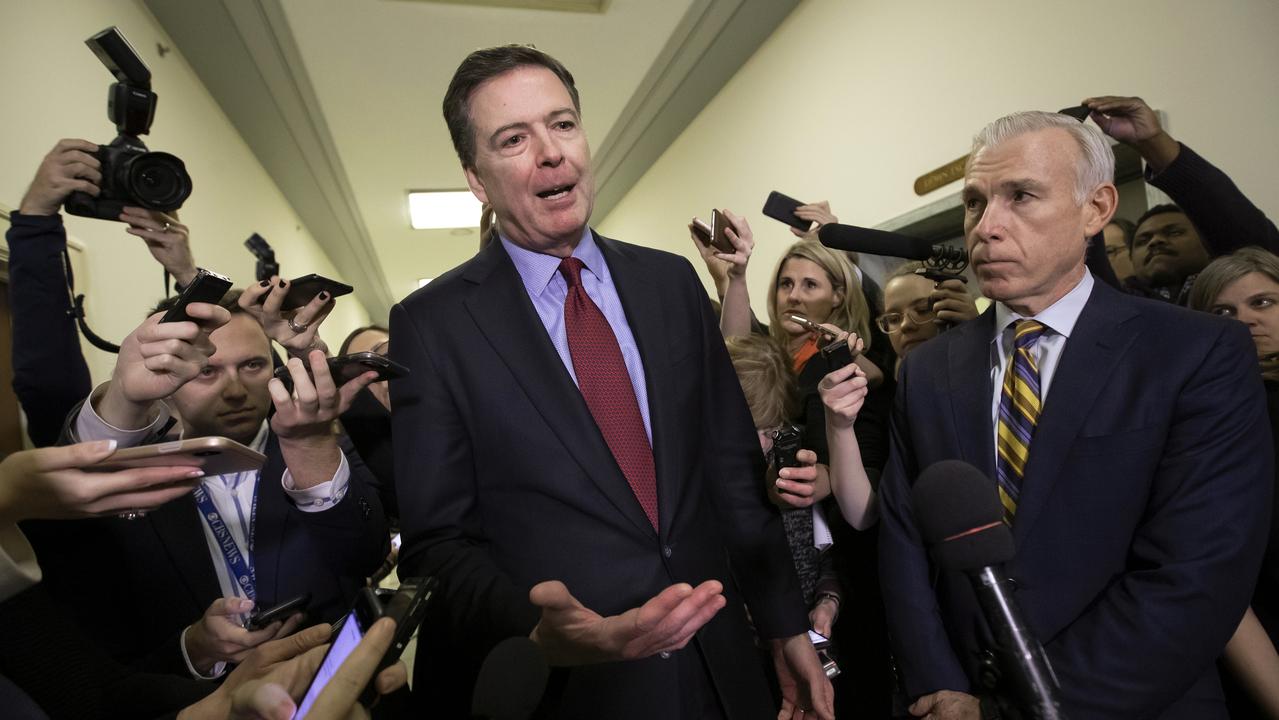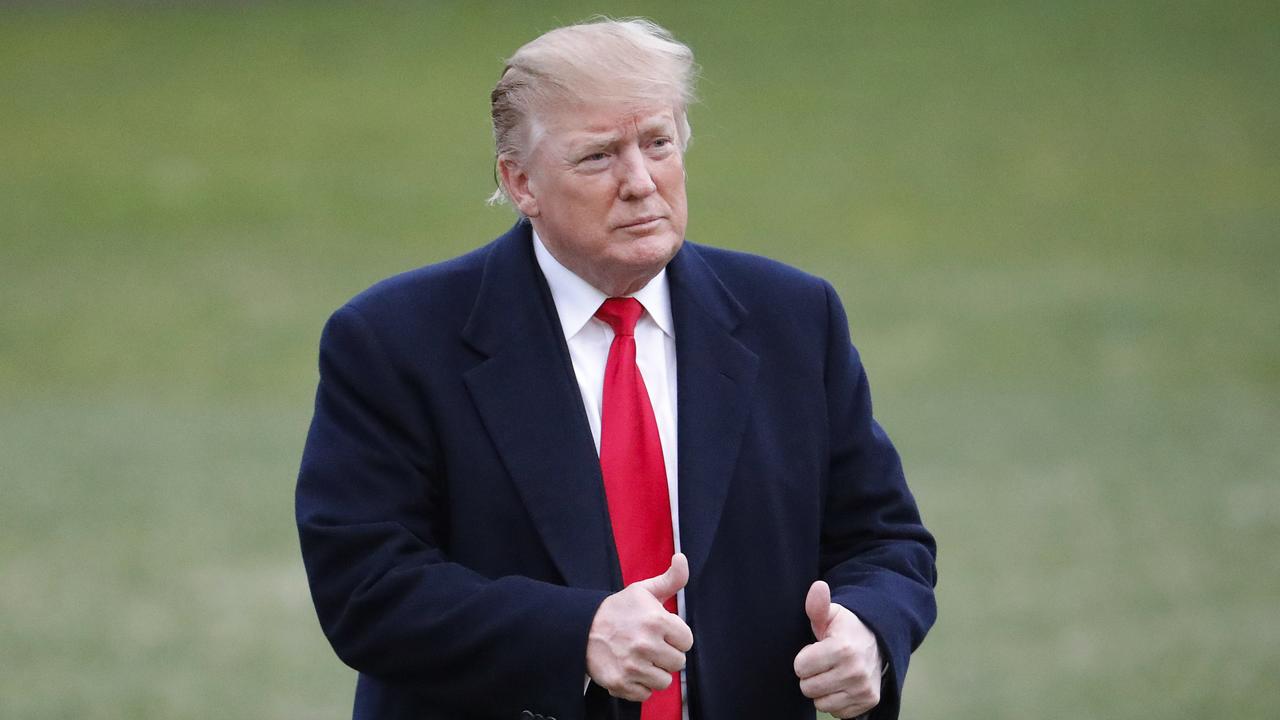Hands across the seas
THE Coalition is courting Japan as an ally in submarine-building and security.

IF troops of the Japanese Self-Defence Force spot a North Korean ballistic missile heading for Tokyo, they can do their best to shoot it down.
But if the missile is headed for the US — or Australia, for that matter — the Japanese are prevented by their constitution from intercepting it.
It’s to reduce that self-imposed strategic isolation that Prime Minister Shinzo Abe wants the current interpretation of the constitution changed to allow the principle of “collective self-defence”.
That would allow Japan to help its allies in a crisis and, presumably, its allies would then be more likely to assist Japan. Quite apart from tensions over the Senkaku Islands, which are claimed by both Japan and China, which calls them the Diaoyus, the joint Japanese-US air defence command said in a recent briefing there had been more than 800 incursions into Japanese airspace in the past 12 months, some of them accidental but most involving Chinese military aircraft.
This change in a domestic policy that is very specific to post-war Japan has had an unforeseen but immediate impact on a much different debate in Australia. Already Australia and Japan have opted to work together on crucial elements of submarine design, and it has opened up the possibility of Australia making a major change in direction and buying complete submarines from Japan.
While there has been speculation for some time that Australia might seek Japan’s help with its plan to design and build a fleet of new submarines, negotiations have been kept largely under wraps and the prospect of major co-operation seemed remote, because of Japan’s pacifist policies.
An announcement in Japan last week by Foreign Minister Julie Bishop, Defence Minister David Johnston and their Japanese counterparts, Fumio Kishida and Itsunori Onodera, was the first public confirmation that the nations will share sophisticated submarine development research and technology.
In government, Labor promised to build 12 big submarines in Adelaide for the Royal Australian Navy. At a likely cost of about $40 billion, that would be our most expensive defence project.
The Abbott government has said it will build submarines in Adelaide, but is not committed to 12. And it has said it remains committed to the future submarine being either an evolution of Australia’s existing Collins-class vessels or a totally new design.
The idea of buying a European submarine off the shelf was discarded some time ago because those available were too small and lacked the range needed.
Some Abbott government ministers are known to be strongly opposed to the idea of spending $40bn on the new boats.
Japan builds what is said to be the world’s best diesel-electric submarine, the Soryu class, but it has long been considered off-limits because of the nation’s pacifist constitution.
All that is changing and the Abbott government is now looking at the submarine project in a whole new way.
It has suddenly become clear that Japan will be willing to give Australia considerable help with the massive job of designing and building its new submarines — and will consider selling complete submarines.
After Tony Abbott’s visit to Japan in April, Japanese ambassador to Canberra Yoshitaka Akimoto said the trip brought bilateral relations to a new level.
Akimoto stressed the importance of closer security co-operation between the two nations and fresh negotiations on co-operation in the fields of defence technology and equipment.
Johnston, a regular visitor to Japan, on holidays as well as government business, has struck up a close friendship with Onodera. Last week he took up a rare invitation to tour a Soryu submarine.
Bishop believes the invitation to Johnston was significant.
It is clear Japan wanted to raise co-operation with Australia on defence and security to a new level, she says.
“The language being used is unprecedented in terms of speaking of the special relationship, the depth and breadth of the friendship and their preparedness to share sensitive information with us,” Bishop tells The Australian.
“That’s given a different complexion to the discussion.”
Bishop says the decision on the choice of Australia’s next submarine will come down to a cost-benefit analysis. “We’re constrained by our budget position but we also want to get the very best option that is available to us.”
Bishop and Johnston stress that discussions are also under way with other nations, including Germany, France, the US and Britain. “This is not the only option available to us at this stage. It’s one of a number,” Johnston says.
Bishop says it became apparent during recent talks between Johnston and Onodera that Japan was quite prepared to provide detailed information to Australia.
“Having the Japanese so prepared to discuss not only their technology but even the prospect of purchasing even an entire submarine brings a different flavour to the discussions,” she says. “They are aware that we are serious about our submarine program and that our white paper is designed, not as a wish list but as list of purchases with funding attached.”
Abe has pushed parliament to make the change quickly, to allow his country to work on a wider range of national security issues.
Tokyo could then support allies such as the US and Australia militarily, even if Japan was not itself under threat.
It would also make it possible for Japan to share its state of the art technology with allies.
Under the agreement announced by the ministers in Tokyo last week, Japanese and Australian defence scientists will work on “hydrodynamics”, a crucial area of submarine design, to ensure the navy’s new boats are the world’s quietist and stealthiest.
The smoother the flow of water over the hull, the less noise the boat makes and the harder it is for surface warships, aircraft and other “hunter-killer” submarines to find and destroy it.
And a hull shape that has the least possible water resistance has another major safety benefit.
A highly efficient propulsion system is crucial to the survival of a conventional submarine because it increases the amount of time the boat can stay submerged without running near the surface to recharge its batteries.
A conventional submarine uses its battery-powered electric motor to travel while it is submerged and so it is quiet and hard to find. The easier it is to push through the water, the less energy it uses and the longer it can stay submerged.
The more energy it uses, the more often it has to run its diesel engines to recharge the batteries.
A submarine is most vulnerable to being spotted while it is on the surface running its diesels or just below, using its snorkel to suck in the air the diesels need to run.
The ability of any Japanese submarines bought by Australia to operate with the US fleet of nuclear submarines will be a significant factor.
The new Australian submarine’s “front end’’ is like to include the same combat system and torpedoes as the US Virginia-class nuclear-powered attack submarines and near-silent propellers developed in the US.
But if Australia does not eventually buy a complete Japanese boat, another option would be to use the Soryu’s diesel-electric propulsion system, regarded as the best of its kind in the world. The “drive train” is the whole apparatus, from the diesel motor that charges the batteries on or near the surface, to the electric motor that drives the boat while submerged, and back to the propeller.
A “serious exchange” about submarine technology and co-operation has been under way for some time with the Japanese navy and defence officials who have visited the Australian Submarine Corporation in Adelaide.
The sharing will not be all one-sided. Scientists from Australia’s Defence Science and Technology Organisation have invented sound-absorbing tiles that coat the Collins submarines’ hulls to absorb the radio-wave “pings” sent out by searching sonar sets.
The DSTO scientists have also developed similar sound-absorbing coatings for the submarine’s “masts”.
Japan is also understood to be very interested in sharing sophisticated radar technology developed in Australia, including a ship defence system which has proved highly effective at shooting down incoming supersonic missiles.
In Tokyo, Kishida tells The Australian his country considers regional threat levels severe and the talks on close defence and security co-operation with Australia very important.
To most Australians, China, North Korea and Japan all feel far away but in Japan, China and the nuclear bomb-equipped rogue state that is the Democratic People’s Republic of Korea, feel intimidatingly close.
At the National Press Club in Tokyo, Japanese journalists were keen to know if their nation’s military pilots would be allowed take part in Exercise Pitch Black, an annual test of air power run by the Royal Australian Air Force across the Top End.
They wanted the Japanese pilots to try out their skills and their aircraft against Flankers, the NATO code name for the Russian and Chinese-built fighters flown by Indonesia and Malaysia.
For Australia to opt to buy a foreign submarine off the shelf would be a devastating blow to the local shipbuilding industry and to those in the Australian Defence Force who consider the ability to build, repair and modernise vessels at home as a vital national security capability.
But, after delays and cost overruns in the Air Warfare Destroyer project, the government has already opted to build new supply ships for the navy in either Spain or South Korea.
And it has signalled it could have eight replacement frigates built overseas if the industry does not improve quickly.
Building up Japan’s production line could be seen by the harder-eyed bean counters in cabinet as a much cheaper and less risky option than the massive task of designing and building a fleet of submarines at home.
It is likely, too, that Bishop and Johnston will be asked when they visit Beijing for talks later this year why Australia is even considering buying a Japanese submarine and sharing more defence technology with Tokyo.
Following his Soryu submarine tour, Johnston says he found the boat impressive: “It was everything I expected, and more.”



